sunrise
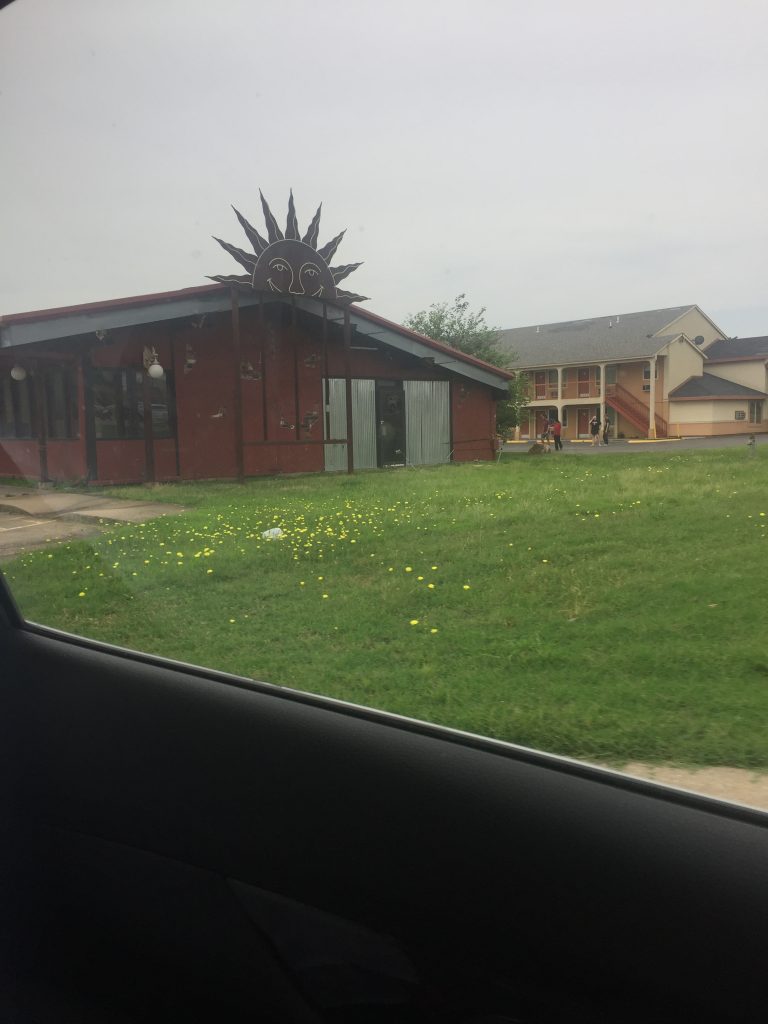
The traveler explores the American Wayside, verifying the contents of a mysterious guide written by a man with whom he shares a likeness and name. Excerpts from ‘Autumn by the Wayside: A Guide to America’s Shitholes’ are italicized. Traveler commentary is written in plain text.

‘What is it they’re farming out there? Too short to be corn, too tall to be any number of ground vegetables. You’ve been driving for a while now. Your passenger wakes up long enough to confirm it isn’t wheat, isn’t any number of American cereals. They’re asleep again, unable to answer questions about the strange farm equipment that appears. You know so little about modern farming. You can’t imagine where they pull enough water to satisfy this field, for instance. You don’t know how much water a field of any type needs. Is an acre more or less than a square mile?
Why are there never people in these fields? Why are there so few birds? Why is the equipment unmanned? When was the last time you met a farmer? How do you know they weren’t lying to you?’
The motorcycle coasts on empty for several nauseous miles before the sun finally sets and we find an exit from I-38. We emerge several states from where we started and loiter, for a while, in the parking lot of a gas station. A woman walks her dog in a patch of grass as her child chooses candy inside.
“I’m not sure we learned anything from all that,” the Editor admits, flipping through a copy of Shitholes, “I don’t think that was useful in the least.”
I chew up the last of Alice’s picks and spit the splinters into the gravel. It’s been a while since she said anything to me. I hope she’s resting now.
“You all right?” the Editor asks.
I nod, and we set off toward the next continental breakfast.
-traveler
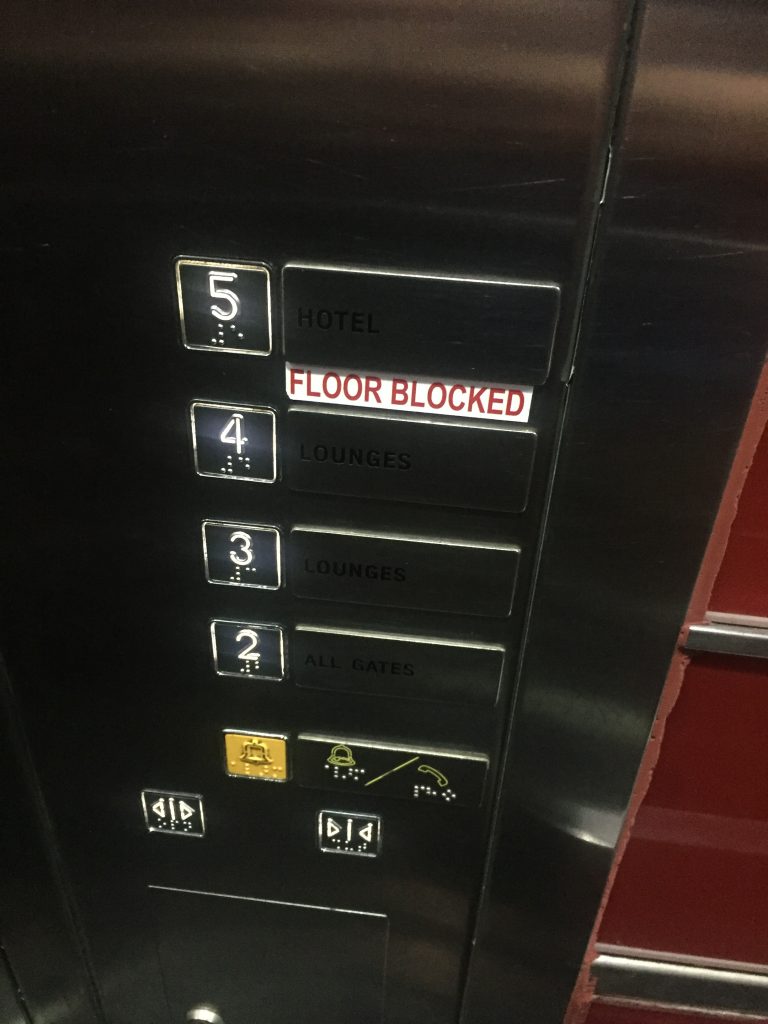
The Editor and I come upon an RV campground before dusk and grow domestic for a while. We wait out a storm in a round mobile home that would sooner crumble than move from the spot, crouched, as it is, like the dry husk of a cicada. We are both so tired and so unused to the stagnant sunset that neither of us recognize time passing. We set up the living room with second-hand carpets and a scuffed coffee table. We share a bed, keeping a respectful distance between our bodies even in sleep. We take turns washing dishes and, sometimes, we order out for food and grumble at the time it takes to have a simple pizza delivered to the door.
We argue. We fight. Our words spill out in front of the neighbors, in front of the neighbors’ kids. The thin walls of the trailer can hardly hold them. We fill our fridge with vegetables we rarely eat. I grow a little fatter. The Editor grows pale.
The Editor takes to leaving the pistol on the coffee table and I find it casually pointing my direction each time I enter the room. She tells me it hasn’t been loaded for months (“Months?” I ask, “How long have we been here?”) but I don’t know where else she would keep the bullets. I’m sure they are there, in the gun, nestled in the barrel’s perfect slots. I thumb the head of a loose screw and wonder if its curvature isn’t the same as the sleeping lead.
When I move the gun to a shelf I don’t realize I shift it out of the Editor’s easy reach. She’s cradling it in her hands when I see it again, the step-stool chair still drawn across the room to the wall. I stand in the doorway with a pizza box balanced on my palm.
“Finally on time,” I was going to say, having retrieved it myself on a motorcycle that may not have seen use in the last year.
We fight again, the worst we’ve had, and we both determine to leave the other but, because we only have the one means of escape, we go together. And the further we are from the RV Park, the less we remember of our time there.
‘We are led to believe that there can exist a hybrid existence between the permanence of ‘home’ and the opportunity of ‘travel.’ But home is a place, reader, and though it might change it cannot be everchanging. We are animals that require a bolt hole, running from something we know is always just behind us or hiding from the same omniscient predator in caves of our own design. Nature will drive us to safety, and it will always run an ‘RV Park’ aground, scraping the wheels from mobile homes and seizing the engines meant to tow them with poverty and clotted oil.’
-traveler
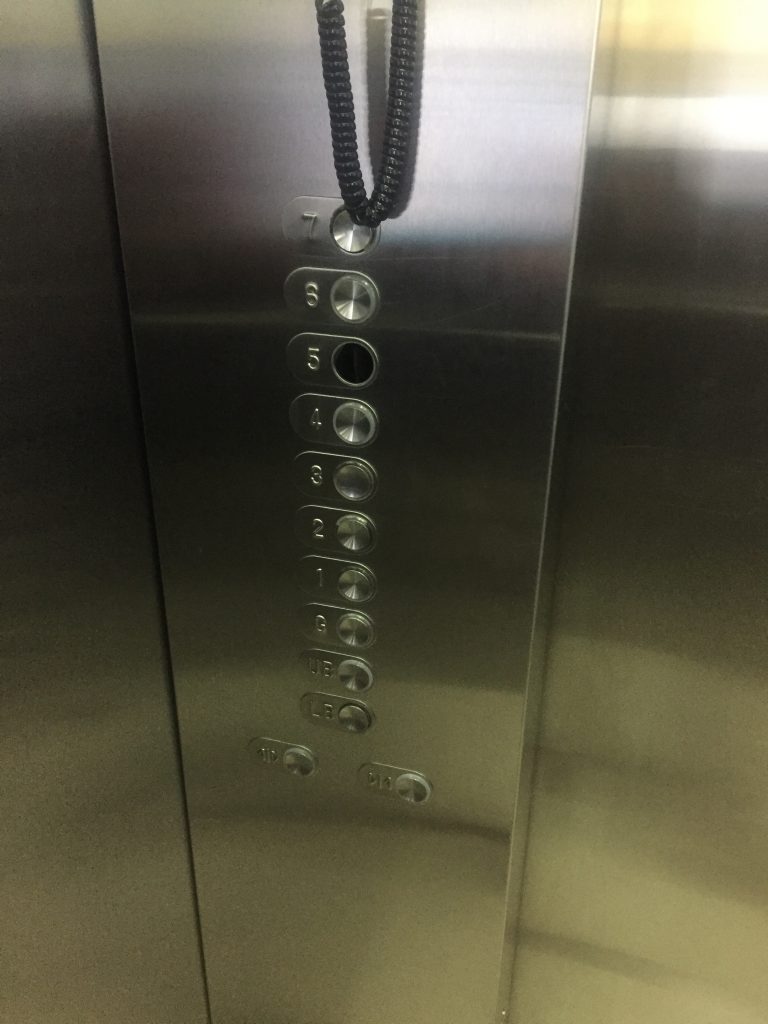
We re-trace I-38 until the pavement lifts off of the ground and completes a dramatic vertical loop, the crest of which is at least 200’ in the air. I suggest we avoid it entirely by navigating the dry grass just off-road but, as I edge the bike’s leading wheel off the gravel, a washed-out state-trooper car further along the way flashes its lights and that’s that. I don’t want police involvement, no matter the absurdity of the situation, and the Editor is suspiciously quick to agree. We turn around and head east, again, the both of us holding our breath as we pass the cemetery, the both of us remembering a day-old hangover as we pass the bar.
The sun never quite sets, here. The horizon never approaches. We drive for a long time along a stretch of road with a lazy cartoon backdrop- the same trees, birds, clouds- until a speck in the distance becomes the busy parking lot of an event space. A banner overhead reads, simply:
‘GUNS’
‘The mutant offspring of the ‘Free Market’ and ‘Constitutional Rights,’ there is always a gun show happening somewhere in America, always a crowd of people to attend it.
It’s a funny thing: relatively few fatalities have been reported at gun shows. On the other hand, like a rash that foreshadows a deadly fever, firearm-based fatalities inevitably rise in their wake as though these events exist at the eye of some subtle storm that stretches across time. They are a haven for scheming, for pre-meditation. A place for subtle nods and quick handshakes. They were not always this way but they are most certainly that way now and, not unlike the weapons that exchange hands at gun show, their once-purpose is greatly overshadowed by the consequence of their misuse. So, maybe not funny.
The shows vary greatly by region, but a few universal aspects stand out among them. They bring about an atmosphere of smug camaraderie among attendants and a subtle paranoia regarding the rest of the world, as though the act of non-attendance is suspicious in and of itself. There will always be trucks in the lot outside, vacant and idling. There will always be men standing nearby, though not so near as to assume ownership of the trucks. There will be accessories to firearms for sale- racks, packs, and ammunition. There will be meat for sale alongside the guns that killed the animals. There will be a smell like smoke in the air. There will be a tangible craving for cigarettes.
The author would suggest avoiding gun shows to the extent that its possible, though, having seen one ahead, they will likely be the safest place in miles.’
“I just want to use the restroom.”
The Editor insists that we attend, that we pay the $5 entry fee, and she promptly forgets about the bathroom. She insists on displaying the pistol openly once we’re inside, opening her jacket dramatically wide. Nobody seems to mind.
She zips her jacket closed as we arrive in the vendor area.
The guns for sale are outrageous. Many seem warped, as though by a cancer that knows only that firearms are made to kill. They sprout auxiliary barrels. They glisten with knives. Stocks bulge to form clubs and shells cling to cobalt as though held there by magnets. In another section all of the guns are designed to point backward, toward the shooter. The more winding the path of the bullet, the more intricate the barrel re-direction, the more expensive the gun.
“How convenient,” the Editor jokes, prodding a spiraled revolver.
“Guaranteed to do the deed,” grumbles a man behind the counter, hardly more than a pile of dry cloth.
“Wouldn’t it explode?” she asks.
“Two paths to the same place,” he coughs.
The Editor brushes her fingers across the cold metal and startles when I press her forward. There are guns for sale that claim to take ammunition of any caliber, with great input valves that shuffle bullets like a coin counters. There are, in some corners, machines that claim to be guns, machines that take shells and have triggers but have no clear means of output.
“Dare you?” a sign hanging above them asks and, with varied emphasis below, “Dare you?”
Neither of us dare. We leave the gun show, weaving through a labyrinth of idling trucks to the bike and the familiar weight of its trailer. Having determined that there is no point traveling backward on I-38, we press on.
-traveler
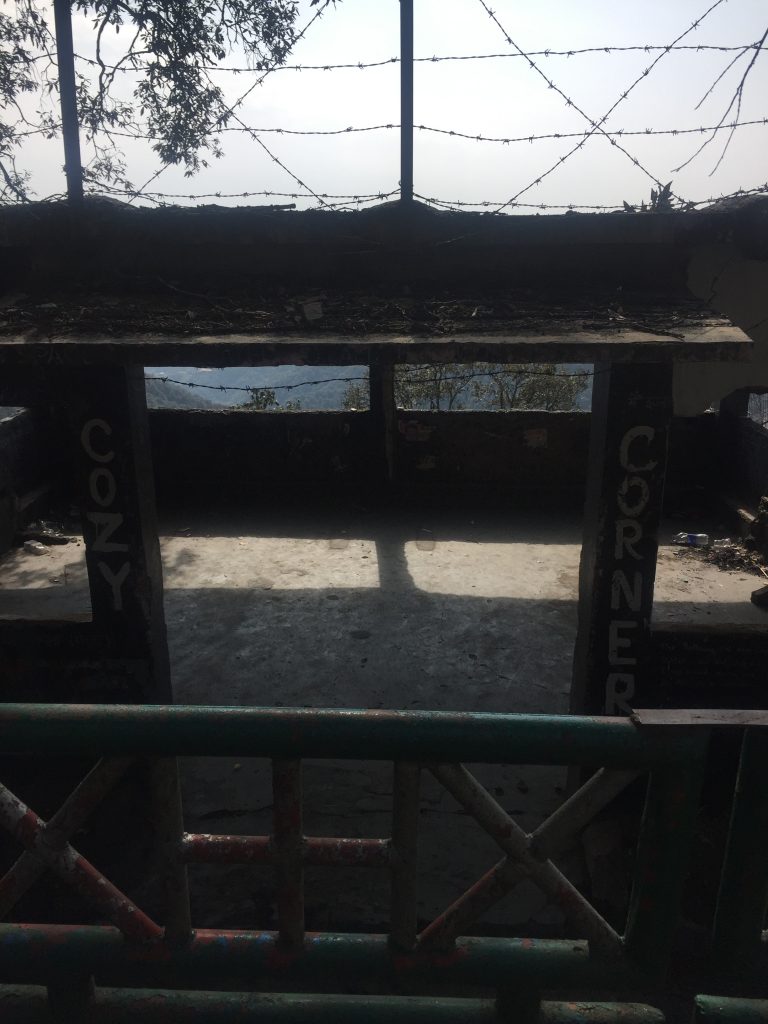
Further back on I-38 we stop so the Editor can investigate what I assumed to be a military graveyard, its headstones white as teeth in orderly rows. She returns sober and aghast at something she refuses to articulate because it has no entry in Shitholes and therefore has no bearing on my journey.
In the false privacy of her helmet I sometimes hear the Editor calculating their number. It seems she’s never satisfied with the result.
-traveler
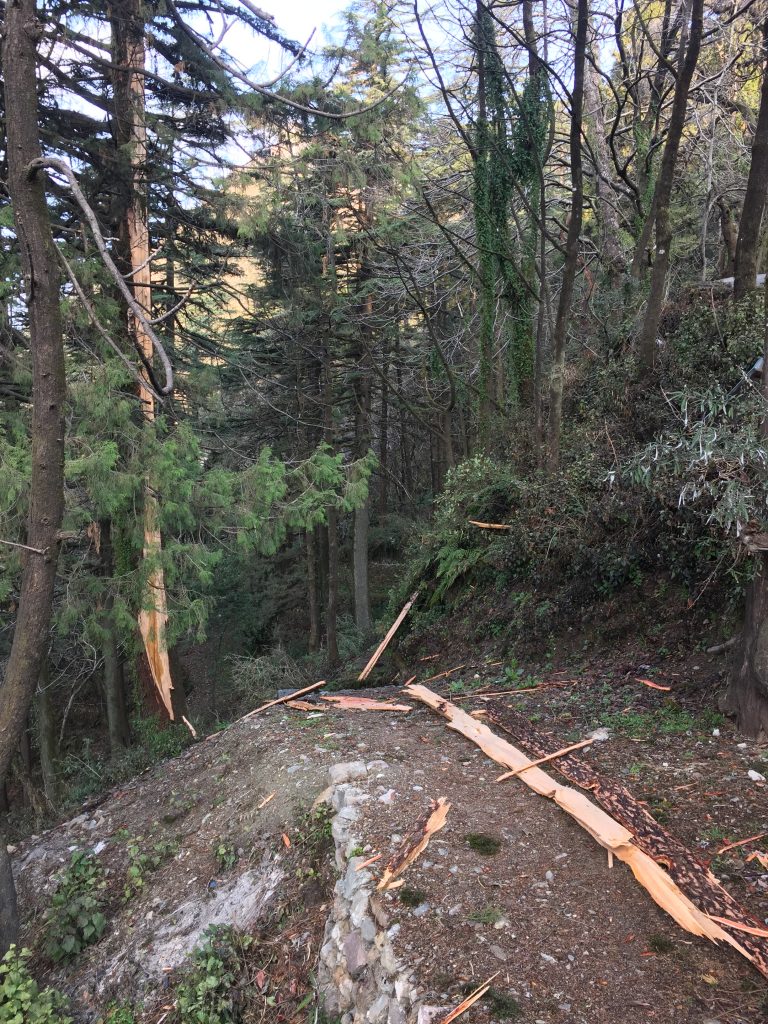
Somewhere in the southeast, the Editor and I fall for a ‘Faulty Road Sign’ and end up on I-38 (which shouldn’t exist). The author of Shitholes includes this little byway as an addendum in the book where one might only find it if one were looking. One would think that, in most cases (including ours), a reader would only attempt to look for it if their GPS had already failed them and if their internet search had already suggested that there were no I-38, and if the only mention of the road online were several pages into a pirated PDF copy of the Shitholes appendices at which point one might turn, frowning, to their own copy of the book and find the entry there, clear as day.
Put simply, a reader will most likely learn about this trap after it has sprung.
‘It can be assumed that there are a few misprints in each lot of road signs that the Federal Highway Administration has produced and, just as a mis-made cell might spiral into cancer, these signs make their way into the system, forming great, redundant interstates that weigh on the taxpayer like a tumor. These ‘Faulty Road Signs’ are distinguishable from their official counterparts only by the absence of a small holographic sticker on the back and, more practically, by simple context clues.
‘Why,’ you might ask yourself, ‘does I-67 consist only of a series of on and off ramps?’ ‘Why does I-21 post minimum speeds as 40 mph when it remains largely unpaved?’ ‘How many times does I-33 split into carpool lanes, their tolls increasingly expensive and their passenger requirements increasingly bizarre?’ ‘For how long does I-38 proceed with a mild right curve toward a sunset that never quite dips below the horizon (shining, always, in the eyes of the driver)?’
You will not likely find the answers to these questions, but you might rest easy with the knowledge that, in asking them, you have narrowed your location to just one of the dozens of feral American roadways that stripe the aging country like varicose veins.’
We burn a pile of books on the side of the road, all copies of ‘Autumn by the Wayside’ from paths the Editor insists we have left to be overgrown. We are not cold and the books were a nominal burden- the Editor burns them with the grim pleasure with which she sometimes considers the gun hidden in her jacket. I’m not sure she remembers revealing it to me at the ‘Parade,’ and neither of us have brought it up since.
It was a gun that made me leave the Stranger.
The Editor prides herself on the narrative layout of ‘Autumn by the Wayside’ and, in the few instances that we have been drunk together, the conversation will turn inevitably to this achievement. It happens again at a bar off I-38 where every menu item is misspelled and the locals move like spiders in short, unpredictable bursts.
“It’s about the reading experience,” she says, her voice the loudest thing in miles, “A normal travel guide is written like an encyclopedia but this is a narrative. This,” she says, jabbing a finger in the appendices, “is the friend that pushes you into the lake when you hesitate on the rock. This is the intervention from on high when you’re too spineless to take the last step into the unknown.”
Light from the sunset pierces the window. Its reflection off the laminated menus makes it difficult to see her expressions clearly. Her eyes well up when she speaks like this, though I haven’t seen her cry since our first encounter at Yellowstone. I shift and the light reflects there, instead. Her eyes are so full that the slightest movement might set them overflowing: an arm around her shoulder, a pat on the back, a hug. I don’t offer any of these things and her gaze remains thick. Flooded.
We’ve been moving backward on the interstate for an hour, carefully straddling the shoulder, though we’ve seen no other cars. We pulled off for a break here, seeing that the lot exited from the left as though its common enough for travelers to be re-tracing their drive. The Editor became drunk immediately, almost as soon as she walked through the door. I took my time- two paths to the same place. We can’t leave until we sober up and, while we wait for that to happen, we drink.
“I don’t care what you think,” she continues, reading disagreement in my relative silence, “I’m proud of this thing. I’m proud of what I made here. This is a work of art- a book like nothing else that’s come out of our company. I couldn’t be more proud.”
Her insistence on the word speaks, to me, of a deep-seated denial- of a story she tells herself to sleep well at night or to return from the dead. I do think she’s proud, but I think that might be the only positive thing she experiences, which makes it difficult to feel complimented when her face breaks into a wide, weepy smile and she says:
“You should be proud, too.”
-traveler
© 2024 · Dylan Bach // Sun Logo - Jessica Hayworth